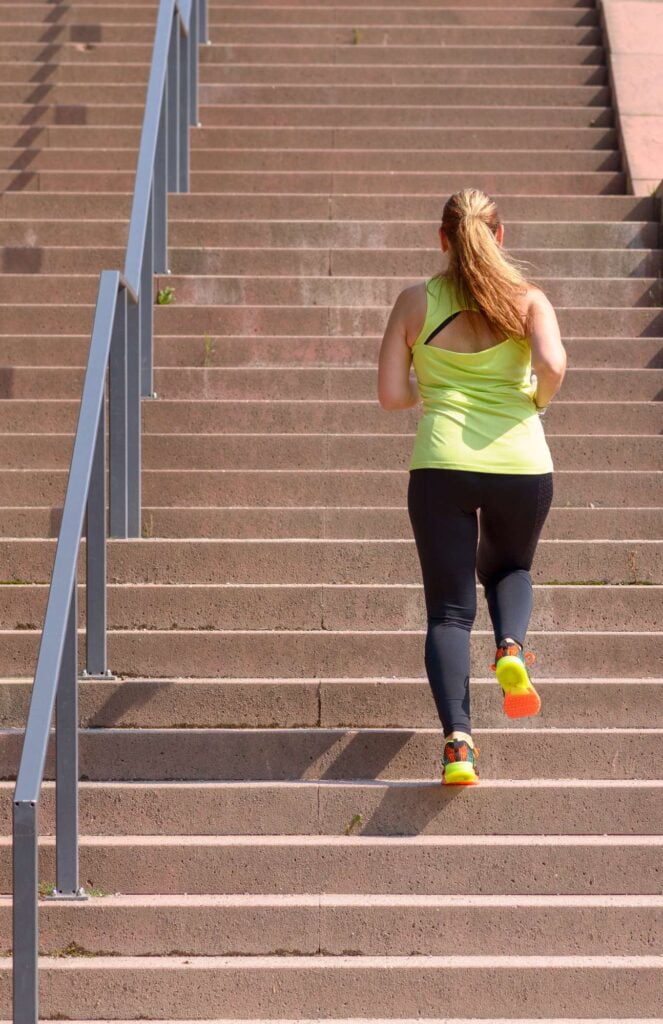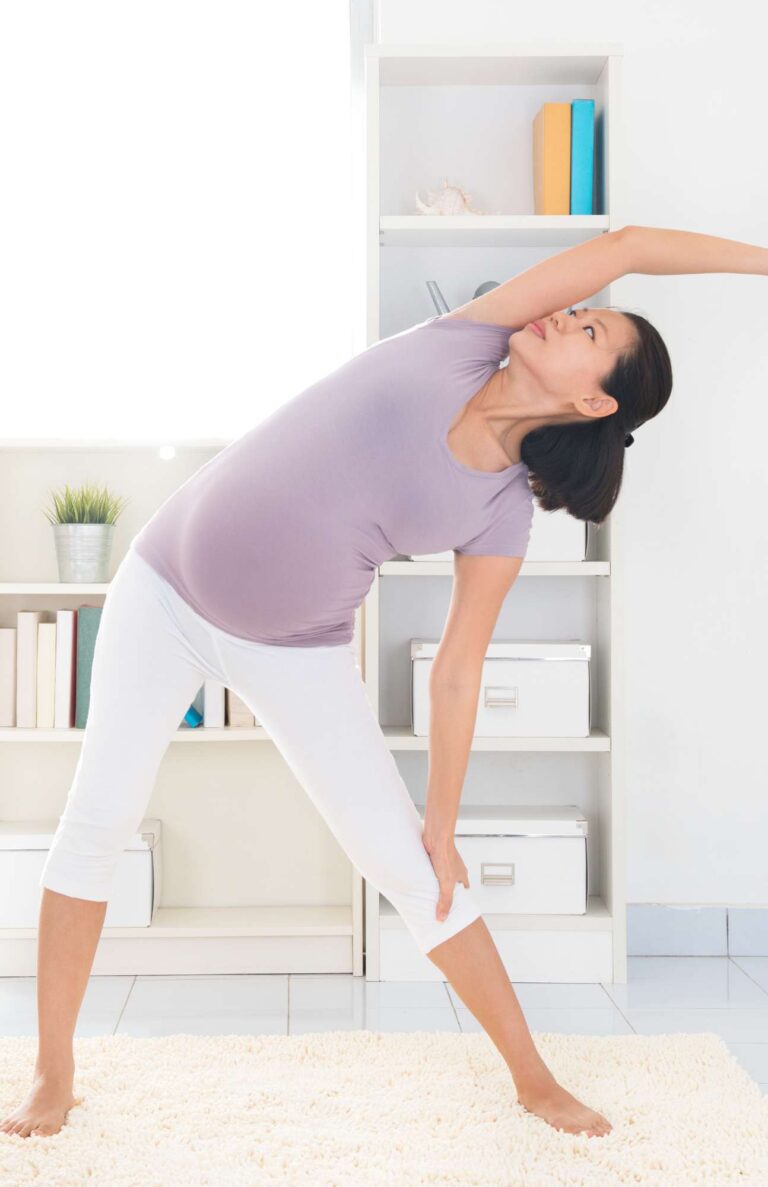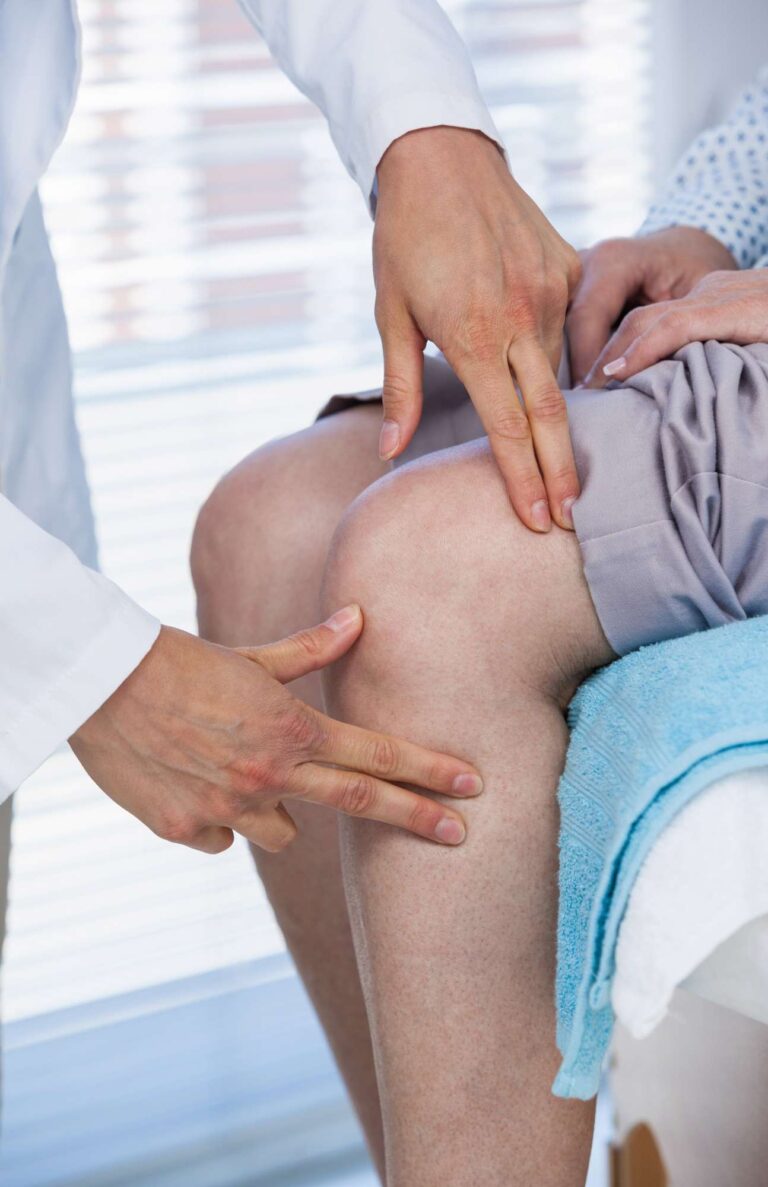What Causes Knee Pain Without Injury? Find Out Now!
Last Updated on January 31, 2024 by Dr. Tiffany Egan
As someone who leads an active lifestyle, I am well aware of the frustration that comes with knee problems. It can be even more perplexing when the pain arises without any apparent knee injury.
In this article, we will look into “what causes knee pain without injury?”, exploring conditions such as osteoarthritis, patellofemoral pain syndrome, IT band syndrome, bursitis, gout, and rheumatoid arthritis. We will also discuss other possible causes and provide guidance on diagnosing, treating, and preventing knee pain without injury.
Table of Contents
What Causes Knee Pain Without Injury?
Osteoarthritis and Knee Pain
Osteoarthritis is a degenerative joint disease that often affects the knees. It occurs when the protective cartilage that cushions the joints breaks down over time. While it is one of the most common type of arthritis associated with aging, osteoarthritis can also develop due to factors such as obesity, repetitive stress on the knee joints, and genetic predisposition.
The symptoms of osteoarthritis include pain, stiffness, swelling, and a decreased range of motion in the knee joints. Although there may not be a specific incident that triggers the pain, the gradual wear and tear on the joints can cause significant discomfort.
Patellofemoral Pain Syndrome and Knee Pain
Patellofemoral pain syndrome, also known as runner’s knee, is a condition characterized by pain around the kneecap. It often occurs as a result of overuse or excessive stress on the knee joint, rather than a specific injury. Activities such as running, jumping, or squatting can exacerbate the pain.
Individuals and young adults with weak thigh muscles, flat feet, or misalignment of the kneecap are more prone to developing patellofemoral pain syndrome. The symptoms may include a dull ache, a grinding sensation, and swelling around the knee.
Patellar Tendinitis and Knee Pain
Patellar tendinitis, also known as jumper’s knee, is a condition that causes sharp pain in the front of the knee. It is most commonly seen in athletes who participate in activities that involve repetitive jumping and landing, such as basketball or volleyball.
Overuse of the quadriceps muscle can lead to inflammation and irritation of the patellar tendon, resulting in pain and stiffness around the kneecap.

IT Band Syndrome and Knee Pain
The iliotibial (IT) band is a thick band of connective tissue that runs along the outside of the thigh, from the hip to the knee. Iliotibial band syndrome is a condition that occurs when this band becomes tight or inflamed, leading to pain on the outer side of the knee. It commonly affects runners and cyclists due to the repetitive motion of these activities.
The pain may start gradually and worsen over time, particularly during movements such as bending or straightening the knee. Factors such as poor running technique, muscle imbalances, or inadequate stretching can contribute to the development of IT band syndrome.
Bursitis and Knee Pain
Bursitis is the inflammation of the bursae, small fluid-filled sacs that act as cushions between bones, tendons, and muscles. When bursitis affects the knee, it can cause localized pain and swelling. Overuse, repetitive movements, or direct trauma to the knee can lead to bursitis.
Activities that involve frequent kneeling, such as gardening or carpet laying, may increase the risk. Symptoms of knee bursitis include pain, tenderness, warmth, and limited mobility of the knee joint.
Gout and Knee Pain
Gout is a form of arthritis that occurs when there is a buildup of uric acid in the joints, leading to inflammation and intense pain. While gout typically affects the big toe, it can also manifest in the knee joint. The pain associated with gout is often sudden and severe, accompanied by redness, swelling, and tenderness.
Certain dietary factors, such as consuming foods high in purines (e.g., red meat, seafood) or alcohol, can trigger gout attacks. It is important to note that gout is a chronic condition that requires medical management to prevent future flare-ups.
Rheumatoid Arthritis and Knee Pain
Rheumatoid arthritis is an autoimmune disease that causes chronic inflammation in the joints, including the knees. Unlike osteoarthritis, which results from wear and tear, rheumatoid arthritis is characterized by the body’s immune system mistakenly attacking its own tissues.
The symptoms of rheumatoid arthritis can vary but often include joint pain, swelling, stiffness, and fatigue. The pain in the knees may be accompanied by morning stiffness that lasts for more than an hour.
Early diagnosis and appropriate treatment are crucial to managing the progression of rheumatoid arthritis and minimizing its impact on daily life.
Sciatica and Knee pain
These are two common ailments that can greatly impact a person’s daily life. They may seem unrelated, but in many cases, they are actually connected. Sciatica is a condition that affects the sciatic nerve, which is the longest nerve in the body. It runs from the lower back, through the buttocks, and down to each leg.
When this nerve becomes compressed or irritated, it can cause pain, numbness, and tingling sensations along its path. Learn more about how sciatica can cause knee pain.
Other Possible Causes of Knee Pain Without Injury
While the aforementioned common conditions are what causes knee pain without injury, it is important to consider other potential factors. These include:
- Overuse: Engaging in repetitive everyday activities or sports that place excessive stress on the knees can lead to pain and inflammation over time. Plantar fasciitis is an overuse condition that can cause knee pain.
- Muscle Imbalances: Weakness or imbalances in the muscles surrounding the knee joint can contribute to pain and instability.
- Postural Issues: Poor posture, such as standing or sitting for a long time with misaligned knees, can put undue pressure on the knee joints.
- Ligament Sprains: Ligament sprains can occur without a specific injury, particularly if the ligaments are weakened or stretched due to previous trauma.
- Bone spurs: These bony growths can develop on the knee joint and cause sharp pain, especially when they rub against other structures.

What Causes Knee Pain Without Injury – Diagnosis
When wondering what causes knee pain without injury, it is important to seek a proper diagnosis from a healthcare provider such as a primary care provider or orthopedic doctor. They will perform a thorough physical exam and may recommend imaging tests such as X-rays or MRI scans to assess the condition of the knee joint.
Additionally, your primary care doctor may order blood tests to rule out underlying medical conditions that could contribute to knee pain, such as rheumatoid arthritis or gout.
Treating Knee Pain Without Injury
The treatment approach for what causes knee pain without injury depends on the underlying cause and severity of the symptoms. Common treatment options include:
- Rest and Activity Modification: Following symptoms, the best way to determine what to do next is by giving the knee time to heal and avoiding activities that exacerbate the pain.
- Cold and Heat Therapy: An ice pack can decrease acute inflammation and swelling. Heat packs can reduce chronic stiffness and chronic knee pain.
- Physical Therapy: A physical therapist can give you exercises and stretches to improve strength, flexibility, and stability of the knee joint.
- Pain Management: Over-the-counter pain relievers, anti-inflammatory medication or prescription medications to alleviate discomfort and severe pain.
- Injections: Corticosteroid or hyaluronic acid injections to reduce inflammation and provide temporary pain relief.
- Bracing or Taping: The use of knee braces or taping techniques to support the knee and promote proper alignment.
- Surgery: In severe cases or when conservative measures fail, surgical interventions, such as arthroscopy or knee replacement, may be considered.

What Causes Knee Pain Without Injury – Prevention and Management
While some cases of what causes knee pain without injury may not be preventable, there are steps you can take to reduce the risk and effectively manage the pain:
- Maintain a Healthy Weight: Excess weight puts added stress on the knee joints, increasing the risk of pain and degenerative conditions.
- Exercise and Strengthen Muscles: Regular exercise, particularly activities that strengthen the muscles around the knees, can help support the joint and reduce the risk of injury. Foam rolling for knee pain is great for tight muscles.
- Use Proper Technique: Whether it’s running, jumping, or lifting, using proper form and technique can minimize the strain on the knees.
- Wear Appropriate Footwear: Shoes with proper cushioning and support can help absorb shock and reduce the impact on the knee joints.
- Warm-Up and Cool Down: Engaging in a thorough warm-up before physical activity and cooling down afterward can help prepare the muscles and joints for exercise and prevent injury.
- Listen to Your Body: Pay attention to any discomfort or pain in your knees. If something doesn’t feel right, take a break and seek medical advice if necessary.
When to See a Doctor for Knee Pain Without Injury
While many cases of knee pain without injury can be managed with self-care measures, there are situations where it is important to consult a healthcare professional for knee pain. Seek medical attention if:
- You have severe knee pain or worsening over time
- You are unable to bear weight on the affected knee
- The knee is visibly swollen, red, or warm to the touch
- There is a sudden onset of pain without any apparent cause
- The pain persists for more than a few weeks despite conservative treatments
Conclusion
Finding your answers to, “What Causes Knee pain without injury?” can be a perplexing and frustrating experience. By understanding the common causes and seeking appropriate medical care, you can find relief and regain control of your active lifestyle.
Remember to listen to your body, take preventive measures, and consult a healthcare professional when needed. With the right approach, knee pain can be effectively managed, allowing you to continue pursuing your passions and staying active.
Note: The information provided in this article is for educational purposes only and should not be considered medical advice. Always consult with a healthcare professional for proper diagnosis and treatment of knee pain or any other medical condition.






